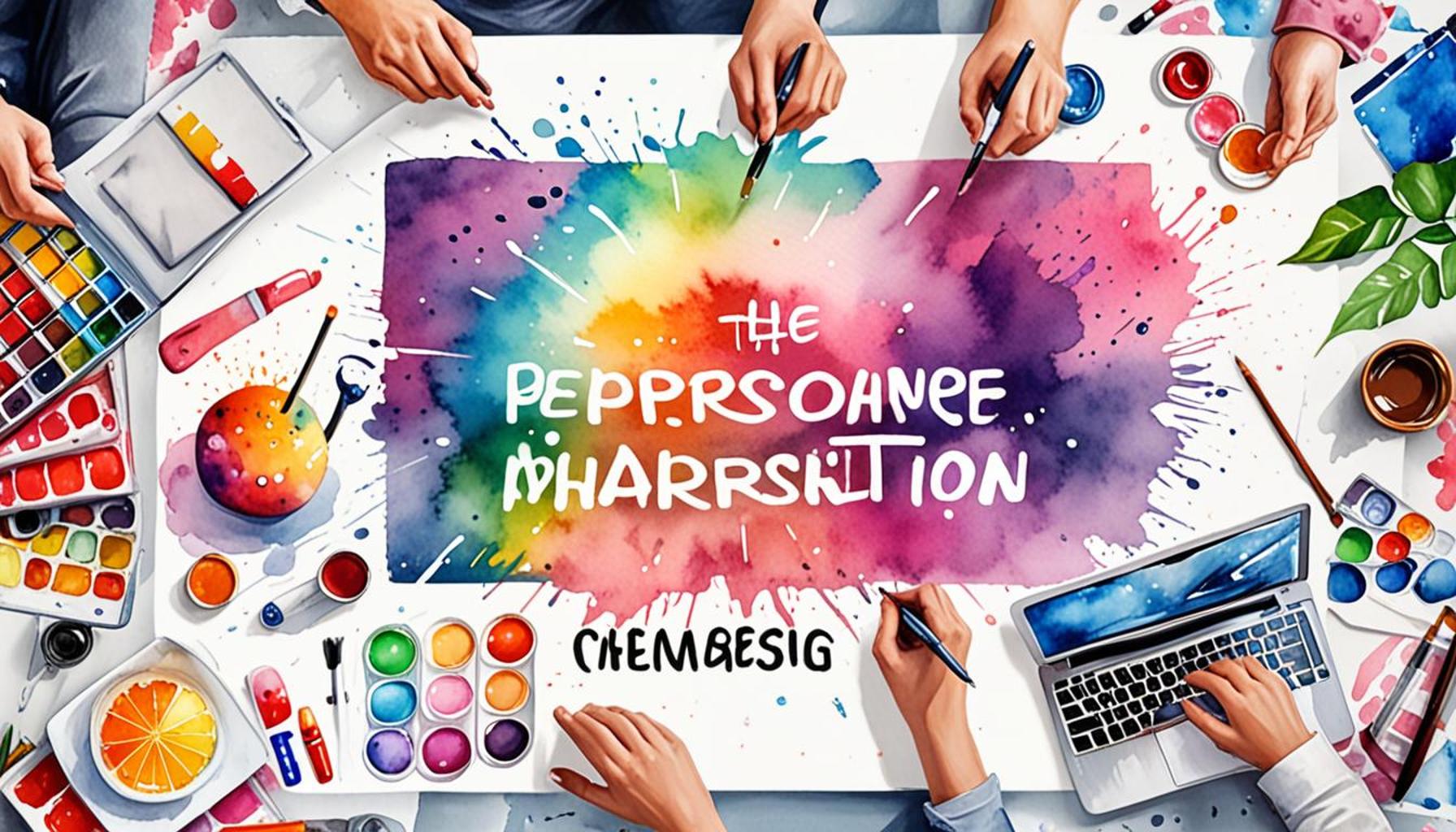SEO and Accessibility Strategies in the Dissemination of Information on Government Benefits

The Importance of Merging SEO and Accessibility in Government Communication
The dissemination of information about government benefits is a critical process that affects millions of Americans. In a digital world that is rapidly evolving, a dual focus on effective SEO strategies and accessibility measures is vital. This synergy ensures that essential information reaches and is usable by those who need it most, regardless of their circumstances or abilities.
Why Prioritize SEO and Accessibility?
Understanding why these elements are crucial helps illuminate their importance in the context of government communication.
- Increased visibility: In a landscape where information is vast, optimized content ensures that individuals can quickly locate the resources they require. For example, someone searching for unemployment benefits may use specific keywords. By employing SEO strategies like keyword research and local SEO, government websites can rank higher in search results, directing users to the appropriate resources efficiently.
- Inclusive access: Accessibility is not just a legal requirement; it’s a moral imperative. By integrating accessibility features—such as screen readers, alternative text for images, and keyboard navigation—government sites can empower individuals with disabilities, ensuring they can access the same information as their peers. This inclusivity can significantly enhance one’s ability to apply for benefits, understand eligibility requirements, and utilize available resources.
- Engagement opportunities: When content is easy to find and navigate, users are more likely to engage. An example of this can be seen in sites that offer interactive tools for benefits eligibility, making them not only user-friendly but also more likely to be shared among communities in need.
Interplay Between SEO and Accessibility
Government agencies and organizations must not only recognize but actively embrace the interplay between SEO and accessibility. By combining SEO best practices with accessible design techniques, a more equitable landscape for information dissemination can be achieved. For instance, websites that utilize alt tags in images are not just making their content accessible to those with visual impairments; they are also improving their SEO performance by providing search engines with context about the images.
Adapting to Evolving Government Services
As government services evolve, so too must the methods employed to communicate these changes. Benefits such as:
- Unemployment benefits,
- Social Security assistance,
- Healthcare services,
are just a few examples of vital resources that require clear and accessible communication. As these benefits change, a cohesive approach to SEO and accessibility can significantly impact how information is not only shared but also understood.
Diving deeper into this article will uncover essential strategies and practical steps that can create a monumental difference in how governmental information is perceived and utilized by the public. By doing so, we can help ensure that vital resources are available to everyone, fostering a more inclusive society where all individuals can thrive.
YOU MAY ALSO LIKE: Read read another article
Driving Engagement Through Optimized Content
In an age where information overload is commonplace, combining SEO strategies with accessibility practices is not just beneficial—it’s essential. Government websites must focus on creating content that not only ranks well in search engines but also remains friendly and usable for everyone, including individuals with disabilities. This commitment to both visibility and inclusivity can dramatically enhance user engagement, resulting in better-informed citizens aware of the benefits available to them.
Key Elements of Effective SEO
To ensure that government information reaches its target audience, several core SEO tactics must be employed:
- Keyword Research: Government agencies should identify the terms and phrases users commonly search for when seeking information on benefits. Tools such as Google Keyword Planner can help agencies uncover popular queries related to services like food assistance or housing benefits.
- Local SEO: Given that many benefits programs are state-specific, optimizing content for local searches is crucial. Including location-based keywords can drive community members directly to resources they need.
- Mobile Optimization: The increasing number of users accessing government information via mobile devices necessitates that websites be responsive. Ensuring that content displays effectively on smartphones can improve user experience and engagement rates.
- Content Structure: Organizing content into clearly defined sections with appropriate headings not only enhances readability but also aids search engines in understanding the site’s hierarchy, increasing the likelihood of ranking higher in search results.
Incorporating Accessibility Best Practices
Accessibility in government communication goes beyond meeting legal standards; it involves making content usable for people with varying degrees of ability. Some fundamental practices include:
- Alternative Text (Alt Text): Images should include descriptive alt text to ensure those using screen readers can understand the content and context, improving the overall comprehension of the information presented.
- Keyboard Navigation: Many individuals with mobility impairments rely on keyboard navigation to access websites. Government sites should ensure that users can navigate through all interactive elements without the need for a mouse.
- Clear Language: The use of plain language in content is paramount. Avoiding jargon and using straightforward terminology can make information more approachable for everyone, including those with cognitive disabilities.
- Consistent Design: A cohesive design across web pages allows for easier navigation. Maintaining consistent layouts, color schemes, and font styles can enhance usability for individuals who may struggle with comprehension.
By embedding these SEO and accessibility strategies into the foundation of governmental communication, organizations can cultivate a more inclusive environment where critical information on government benefits is readily available to all American citizens, regardless of their ability or background. This paradigm shift not only improves the reach of essential services but also underscores a commitment to equity and social responsibility in government affairs.
| Advantages | Details |
|---|---|
| Enhanced Visibility | Implementing SEO strategies such as keyword optimization helps governmental websites rank higher in search results, making essential information on benefits more accessible. |
| Increased User Engagement | By focusing on accessibility strategies, websites become more user-friendly, accommodating various disabilities and ensuring that all citizens can easily navigate and obtain information about government services and benefits. |
| Broadened Audience | With effective SEO and accessibility practices, the outreach of government benefits expands to underrepresented communities, ensuring no one is left uninformed about available resources. |
| Compliance and Trustbuilding | Adhering to accessibility standards not only fulfills legal requirements but also builds trust within the community, affirming that the government prioritizes everyone’s right to information. |
Incorporating these strategies not only serves to better inform citizens but also promotes democratic accessibility in information dissemination. Curious readers should delve deeper into how these practices can revolutionize the way information about government benefits is shared and understood.
ADDITIONAL INSIGHTS: Expand your understanding here
Leveraging Technology to Maximize Reach
As government agencies strive to optimize content and enhance accessibility, leveraging technology to reach diverse populations becomes crucial. By integrating advanced tools and innovative practices, government platforms can not only disseminate information more broadly but also ensure it is digestible for all citizens.
Utilizing Data Analytics for Insights
Data analytics is a powerful instrument for understanding how citizens interact with government websites. By analyzing user engagement metrics, agencies can identify which sections receive the most traffic and which resources are frequently accessed. Tools like Google Analytics provide actionable insights into user behavior, revealing common pathways taken by visitors. This information can inform future content strategies, allowing agencies to optimize pages that might not be adequately serving their audience.
Moreover, implementing A/B testing can help determine which variations of content layout or wording generate better engagement. For example, if one version of a benefits page includes a interactive FAQ section while another only lists text answers, agencies can track which format garners more user interaction. This iterative approach can enhance both SEO performance and accessibility, ensuring that resources are not only visible through search queries but are also easier to navigate.
Interactive Content as a Tool for Engagement
Incorporating interactive elements such as videos, infographics, and user-driven tools can significantly enrich the dissemination of information. Interactive content can capture the attention of users and simplify complex information. For example, an interactive benefits calculator can help individuals understand their eligibility for various programs, ensuring they feel empowered to apply.
Furthermore, utilizing captioning and transcripts for video content can make these resources more accessible to individuals with hearing impairments. This commitment to inclusivity not only adheres to best practices but also enhances the overall user experience by catering to a broader range of learning preferences.
Community Engagement and Feedback Loops
Engaging with the community can offer tremendous insight into the effectiveness of current strategies. Implementing feedback forms or user surveys directly on government websites can provide real-time responses to service needs and accessibility challenges. Such direct communication channels allow for adjusting information dissemination strategies based on user experience.
For instance, agencies could ask users about their experiences accessing certain benefits or inquire about barriers they face in obtaining necessary information. This feedback empowers citizens, making them active participants in the optimization of public resources and services. The insights gained can inform ongoing adjustments in content strategy and site design, ensuring that it remains relevant and accessible.
Collaboration with Advocacy Groups
Collaboration with organizations that advocate for people with disabilities can guide the development of SEO and accessibility strategies. These groups can provide valuable insights into the unique challenges faced by their communities, informing strategic decisions on content creation and site navigation. Events such as focus groups or workshops can facilitate discussions that reveal common hurdles in accessing government benefits, helping create more effective, user-driven content.
In addition, agencies should consider developing partnerships with local non-profit organizations to promote awareness of available benefits. These organizations can help amplify messaging through their networks, taking advantage of the trust already established with their beneficiaries. Such collaborations can significantly enhance the reach and impact of government programs.
Ultimately, blending technology with a focus on user feedback and community engagement creates a dynamic approach to disseminating critical information about government benefits. The intersection of SEO and accessibility not only fosters information sharing but also reinforces the invaluable connection between the government and its citizens. This interconnected framework positions agencies to meet the diverse needs of the population while upholding a standard of excellence in public service.
CHECK OUT: Click here to explore more
Conclusion: Prioritizing Inclusivity in Information Dissemination
In an era where the digital landscape is ever-evolving, the integration of SEO and accessibility strategies is essential for government agencies to effectively disseminate information about benefits to all citizens. By harnessing technology alongside community engagement, agencies can create a robust framework that not only enhances visibility but also ensures inclusivity for individuals with diverse needs.
Utilizing data analytics empowers agencies to make informed decisions based on user behavior, leading to optimized content that resonates with the public. Coupled with interactive elements and accessible formats, this strategy appeals to a wider audience by simplifying complex information and making it more engaging. Accessibility features, such as captioning and transcripts, highlight a commitment to inclusivity, allowing individuals with disabilities to fully participate in the benefits available.
Additionally, fostering partnerships with advocacy groups enhances understanding of the unique challenges faced by various communities. Feedback loops initiated through surveys or focus groups can further refine strategies and ensure that the dissemination process evolves to meet public needs effectively. By translating insights from these collaborations into action, government agencies can build trust and foster active participation from citizens in their own governance.
Ultimately, the convergence of SEO and accessibility lays the groundwork for a more informed populace ready to leverage available government resources. As agencies commit to these strategies, they uphold a standard of excellence in public service, ensuring that critical information about government benefits is not just accessible, but truly reaches those who need it the most. In this pursuit, the journey continues—one that invites all to explore, engage, and benefit from the vital resources designed to support their lives.


